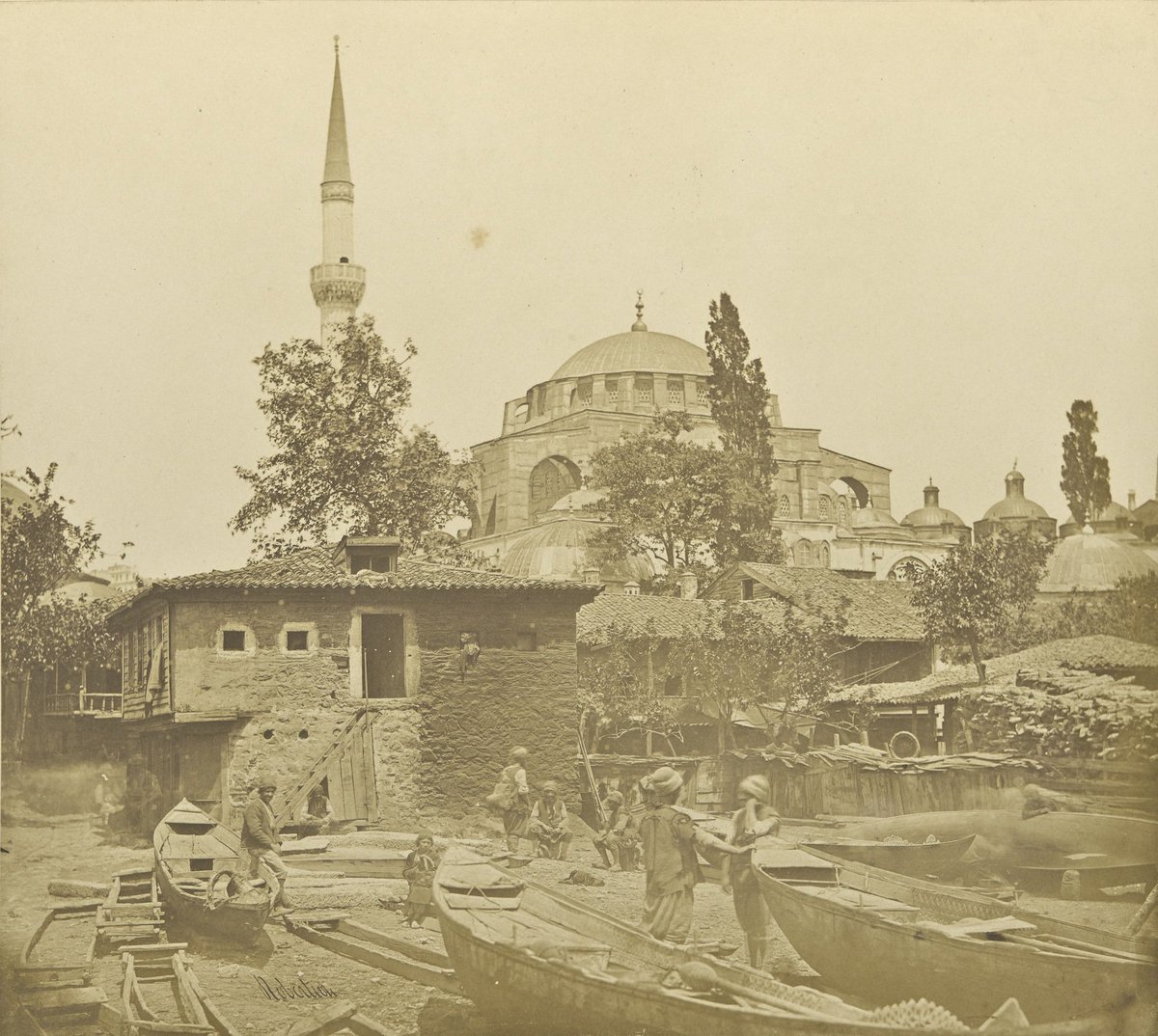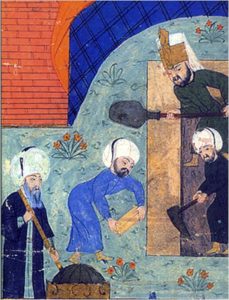The Mosque of Kiliç Ali Paşa
 The unique history of the construction of The Mosque of Kiliç Ali Paşa in 1580, matches the unique life of its patron.
The unique history of the construction of The Mosque of Kiliç Ali Paşa in 1580, matches the unique life of its patron.
Kiliç Ali Paşa, born as Giovanni Dionigi Galeni of Calabria, was enslaved as a young man and forced to work the high seas in the Ottoman navy. He rapidly rose through the ranks of his captor vessel before becoming captain of his own ship, later achieving the rank of Grand Admiral (Kiliç) of the world’s strongest navy at the time.[1] Towards the end of his naval career, Ali Pasha commissioned his namesake mosque.
Kiliç Ali Paşa’s rival is rumored to have proclaimed “let him build his mosque on the sea.”[2] The petty insult was taken instead as a challenge and Ali Paşa and Mimar Sinan, the architect, decided to do precisely that.
The mosque itself was built on an artificial island created along the banks of the Bosporus Strait. Its position on the water was meant to reflect its dedication to the Ottoman navy under Ali Paşa. The mosque was one of Sinan’s last designs and featured a colossal dome and single minaret. Much like Sinan’s other designs, it has a central plan modeled after the Hagia Sophia. The mosque complex also includes a medrese (religious school), a steel foundry, and two hamam (bathhouses). The bathhouses were recently renovated and bringing new attention to an otherwise often overlooked mosque.[3] Kiliç Ali Paşa was entombed within the mosque complex’s türbe, or mausoleum.
By Raheem Elrington Middleton, Patrick Greene, and Tomasso Marasa

[1] “Kiliç Ali Paşa Mosque.” Istanbul Tour Studio.
[2] Freely, John. 1987. Blue Guide Istanbul. 1. 2nd ed. Bedford Row, London: A&C Black.
[3] Ostwald, Michael and Özgür Ediz. 2014. “Measuring Form, Ornament and Materiality in Sinan’s Kılıç Ali Paşa Mosque: An Analysis using Fractal Dimensions.” Nexus Journal Network 17 (1): 5-22.
About Mimar Sinan
- Mimar Sinan (left) depicted holding a wooden measuring stick overseeing the construction of the mausoleum for Sultan Süleyman I, from Tārīkh-i Sulṭān Sulaymān by Seyyid Lokman, 1566, the Chester Beatty Library, Dublin (ms. T. 413, fol. 115v.)
- 10,000 Turkish Lira banknote (reverse), image of Sinan and the Selimiye Mosque, Edirne, Turkey.
Further Reading
Necipoğlu, Gülru (2007). “Creation of a national genius: Sinan and the historiography of “classical” Ottoman architecture”. Muqarnas. 24: 141–183.
Crane, Howard; Esra Akın and Gülru Necipoğlu, eds. (2006). Sinan’s Autobiographies: Five Sixteenth-century Texts. Leiden: Brill.
Güler, Ara, Burelli, Augusto Romano; Freely, John (1992). Sinan: Architect of Suleyman the Magnificent and the Ottoman Golden Age. WW Norton & Co. Inc.
Kuran, Aptullah. (1987). Sinan: The Grand Old Master of Ottoman architecture, Ada Press Publishers.

